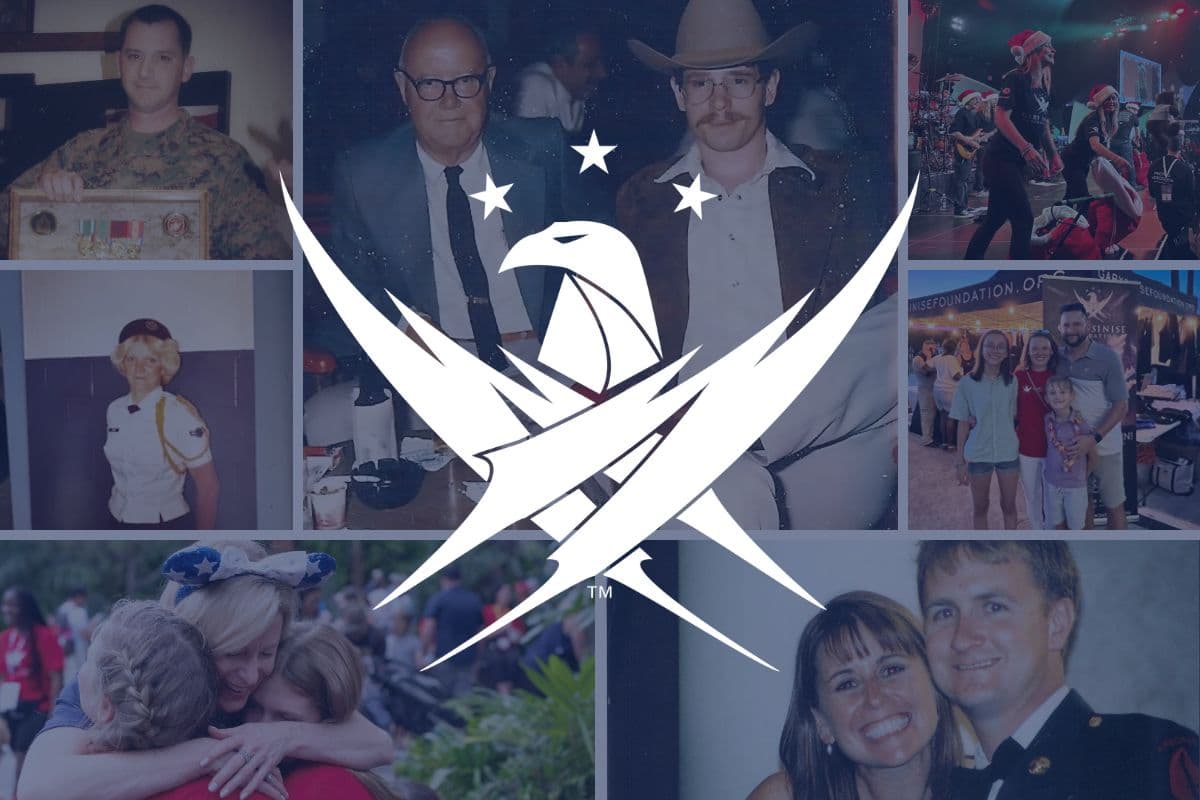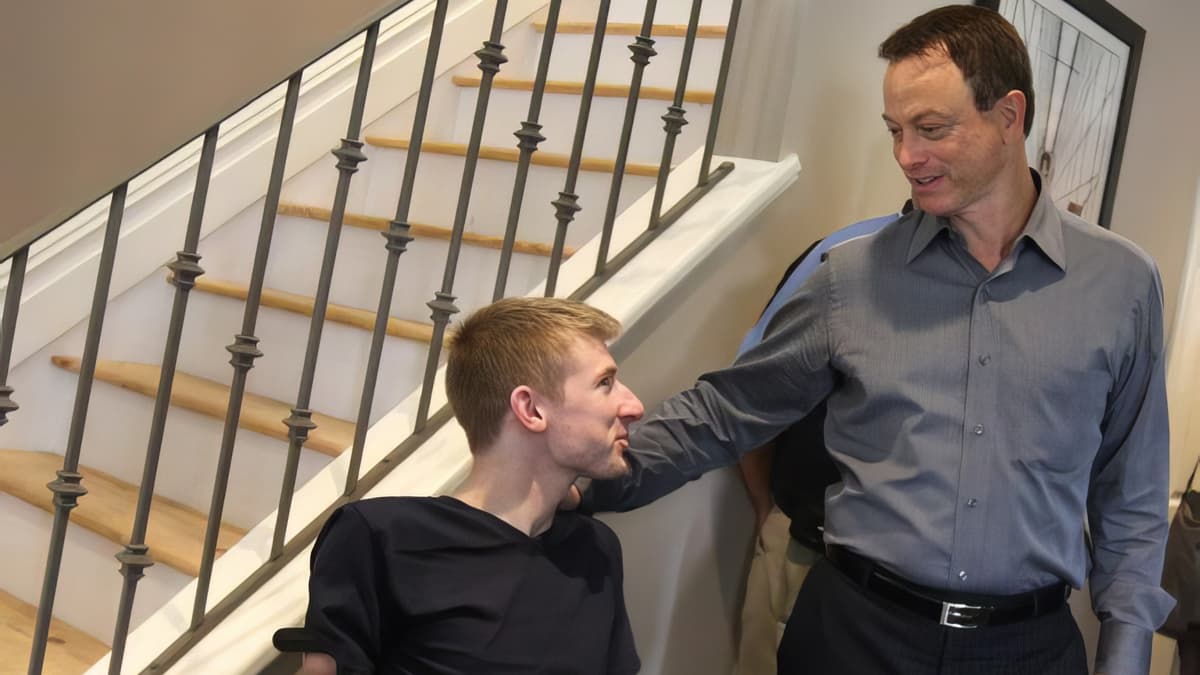Gary Sinise Foundation and Operation Ramp It Up deliver wheelchair ramp to injured police officer

Zackary Hunt felt like he was living in hell.
For three months in the fall of 2019, the 20-year-old felt like he was getting butt kicked during Basic Law Enforcement Training Academy at Robeson Community College. Hunt and several dozen recruits were pepper-sprayed and hit with gas canisters. Others were tased. Physical training was grueling. Nearly every day, Hunt remembers cranking out nearly 200 push-ups that his arms felt like “noodles.”
“It was intense training,” said Hunt, “but the bond that all of us had together — there were some people that didn’t like the others, but in the end, we all knew what career we were going into and how dangerous it could be.”
Chief among those dangers: high-speed pursuit driving.
The academy dedicates several days to high-speed pursuit training. Recruits chase instructors, driving on a vacant airstrip at a local municipal airport. It is not uncommon to reach speeds upwards of 80 or 90 mph, Hunt said. During a chase, recruits are instructed to pay close attention to the suspect’s body language should they reach for a weapon or throw drugs or another item from their vehicle.
While traveling at high speeds, Hunt explained that police officers must relay a basic information checklist to their command and pursuing units. This includes the location the suspect is traveling, a description of the make and model of the suspect’s vehicle, and the suspect’s vehicle license plate number.
“You have to focus on so much stuff during the chase. It’s kinda dangerous.”
Like wearing a seatbelt, safety, particularly at night, is at the heart of lessons drilled into recruits by the academy’s instructors.
Never outrun your headlights
Don’t get tunnel vision
“They try and prepare you for everything that you would see on the job but the way that the world is now,” Hunt explained, “you never know, really, what to prepare for. You just hope that you’re ready for it when it comes.”
Hunt, a rookie in the Fairmont Police Department in North Carolina, had few brushes with high-speed pursuits. The inexperience meant that he had few opportunities to overcome, much less prepare for, the dangers of a high-speed pursuit.
On the evening of January 4, 2021, two men were seen attempting to rob a convenience store in Maxton, north of Fairmont. The suspects were seen fleeing in a white, compact vehicle. Hunt was stationed in the area at a vehicle checkpoint.
What began at a stop sign, the suspects’ vehicle several car lengths ahead of Officer Hunt, suddenly escalated. “He made a right turn and ran every stop sign after that.”
Speeding down a dimly lit road, the suspects’ vehicle took sharp turns to lose Hunt driving a Chevy Tahoe. But as more time passed during the pursuit, Hunt said, “I felt that I got tunnel vision while focusing on the car.”
When the suspects’ vehicle slowed down to make a hard right turn, Hunt instinctively hit the brakes, turning the steering wheel hard to get around the curve. It was an impossible maneuver for the hulking SUV.
“As soon as I hit the woods,” Hunt said, “everything went black, and it felt like three seconds, maybe, when all it was complete silence — just a black picture.”
According to local news reports, first responders from the South Robeson Rescue Unit and Fairmont Fire Department arrived at the scene. Fairmont firefighters pried Hunt from the wreckage using the Jaws of Life. Coincidentally, the fire department purchased the hydraulic tool in 2019 with grant funding from the Gary Sinise Foundation.
Hunt broke both his pelvis and hip in the wreck; a staph infection extended his stay at the hospital an extra week. Unbeknownst to him, a coordinated effort was underway by the Gary Sinise Foundation and Operation Ramp It Up.
The Cincinnati-based nonprofit installed a temporary wheelchair ramp at the front of his house. Forming an “L” shape from the front door to the driveway, the ramp measures 31 feet in keeping with ADA guidance (one inch of step corresponds to one foot of ramp).
“We actually added a couple more feet just to make it land a little bit easier onto the driveway,” said Greg Schneider, the organization's chief executive. “You want to make sure that your first responder or veteran has no type of step or anything.”

Both organizations split the cost of the ramp. What ordinarily takes Operation Ramp It Up weeks, including a home visit, Schneider said, took days in Hunt’s case.
“Without all that love and support from Gary [Sinise] or the police department or my family and friends,” Hunt said, “I don’t think that I would recover as fast as I did — emotionally and physically as well, even mentally.”
Hunt returns to work this week. He will work a desk, writing reports, performing light duties until the Fairmont Police Department deems him fit, particularly physically, for patrol. Once immobile for several months, Hunt no longer relies on a wheelchair or crutches to move around.
Twice a week, he goes to physical therapy. Months of inactivity led to significant muscle and weight loss. He walks with a limp, still in pain but making strides in his recovery — a small price to pay for a dangerous career.










